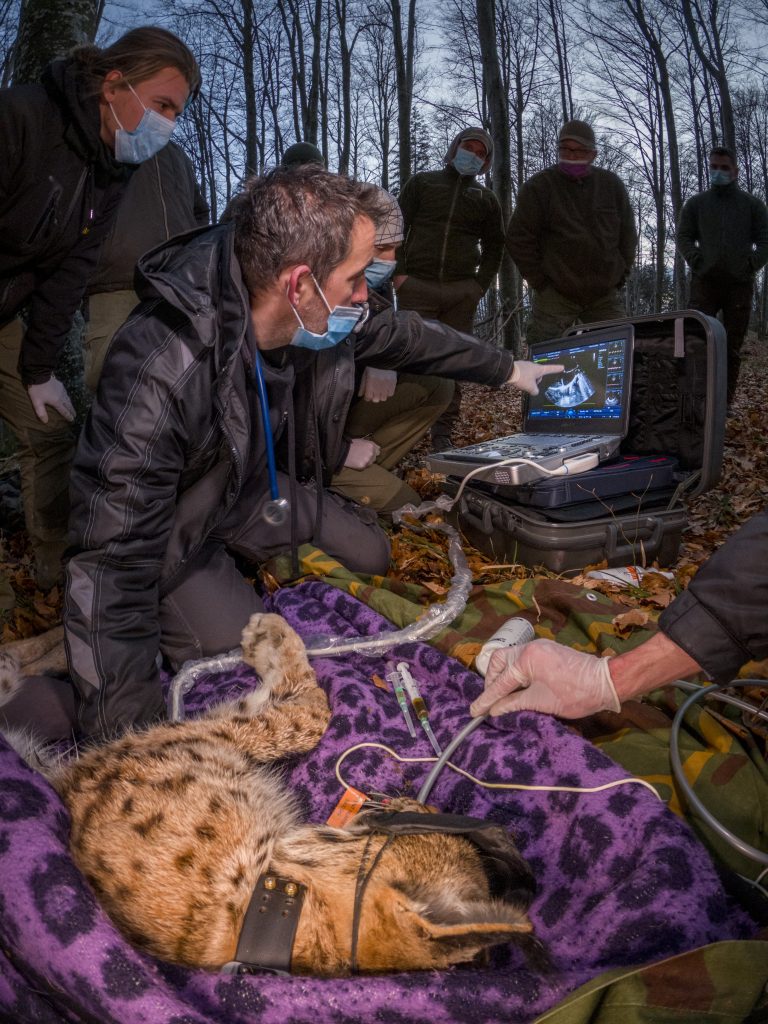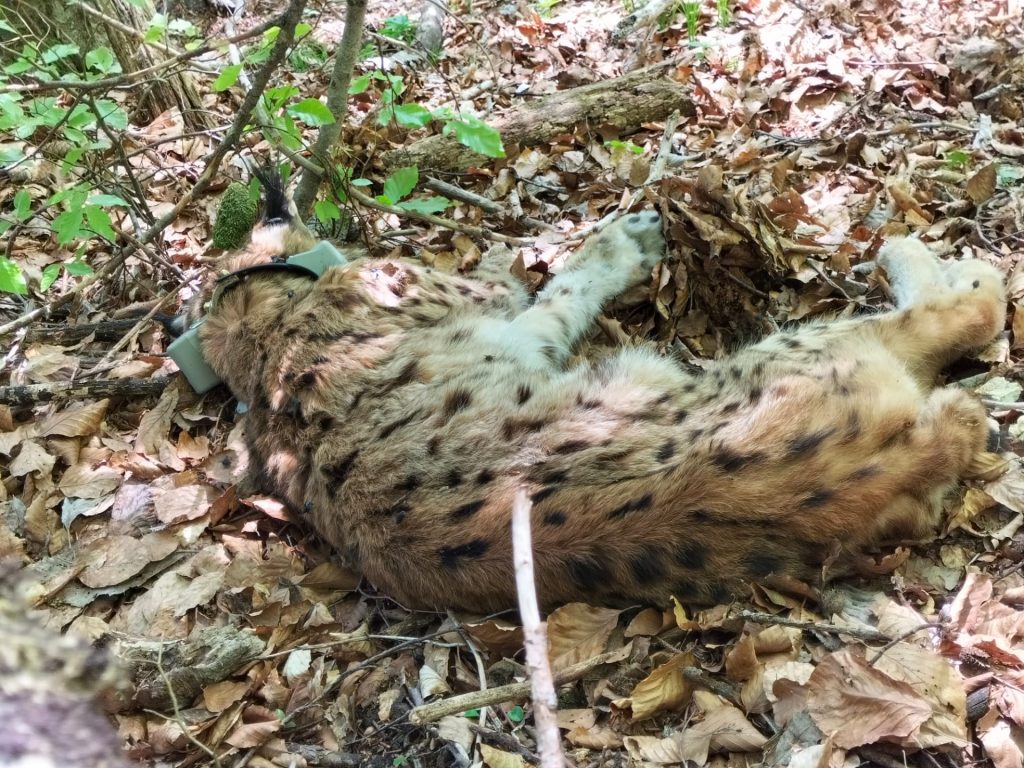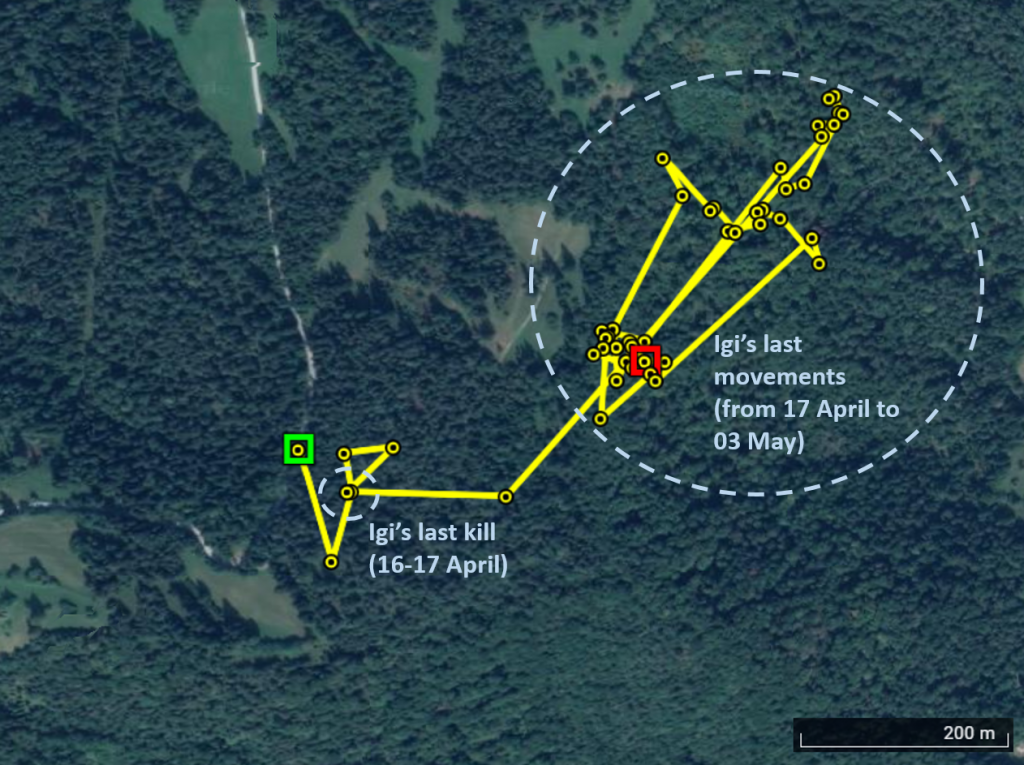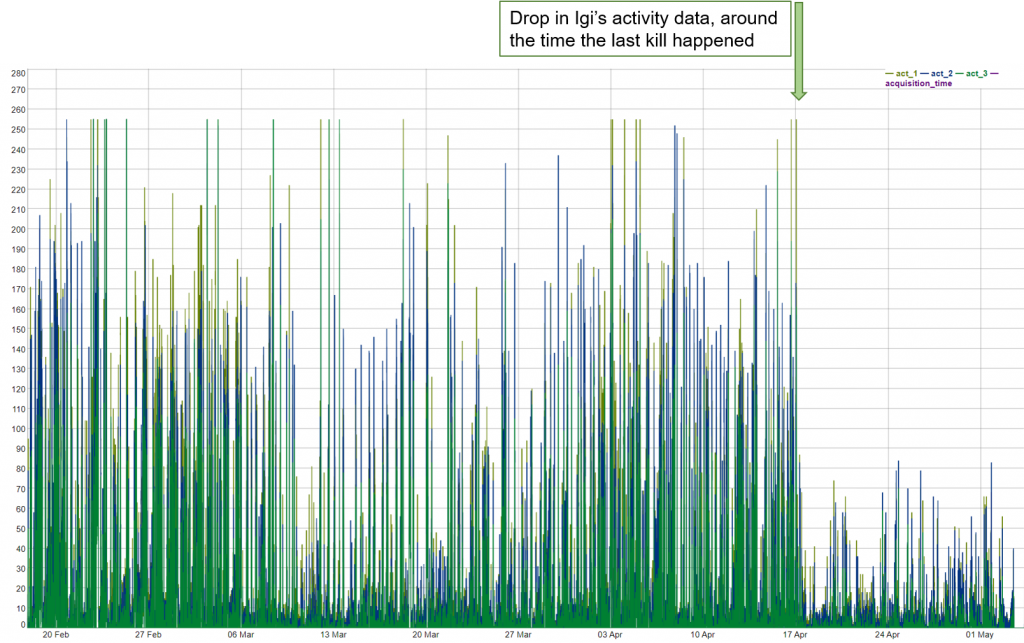In the beginning of May, we received a mortality signal from the telemetry collar of lynx Igi, a resident Slovenian lynx that we monitored with telemetry since February this year. We immediately visited the last locations sent by the collar and found Igi’s carcass, showing severe loss of weight but no visible injuries. The carcass was taken to the Veterinary Faculty, University of Ljubljana, for examination and autopsy to determine the cause of death. It was clear from the telemetry data that lynx Igi was confined to a small area of about 1 km2 for two weeks before his death. In fact, he has stayed in the vicinity of his last documented kill, an adult roe deer. The activity data from the telemetry collar further confirmed his stagnation as the activity almost halved after he made that kill. Considering several deformations, including a severe heart murmur, which were documented during his capture in February, we assume his death is a consequence of heart or other internal organ malfunction.

Lynx Igi at capturing in February this year. Photo: Janez Tarman

Lynx Igi’s carcass. Photo: Urša Fležar, LIFE Lynx

Map of Igi’s movements, three weeks before his death. Photo: Teresa Oliveria

Igi’s activity data from his capture until his death. The Y-axis reflects the activity values, which range from 0 (no activity/movement) to 255 (very active). Graph: Teresa Oliveria
Findings of lynx carcasses are rare. Mostly we find them in case of traffic mortality or when lynxes are monitored with telemetry collar. Even though we did not monitor Igi for long, he provided us with valuable data about the possible effects of inbreeding depression occurring in the Dinaric lynx population. Such cases additionally underpin the urgency of translocating healthy, non-related lynx from the Carpathians to save the Dinaric SE-Alpine lynx from extinction.
